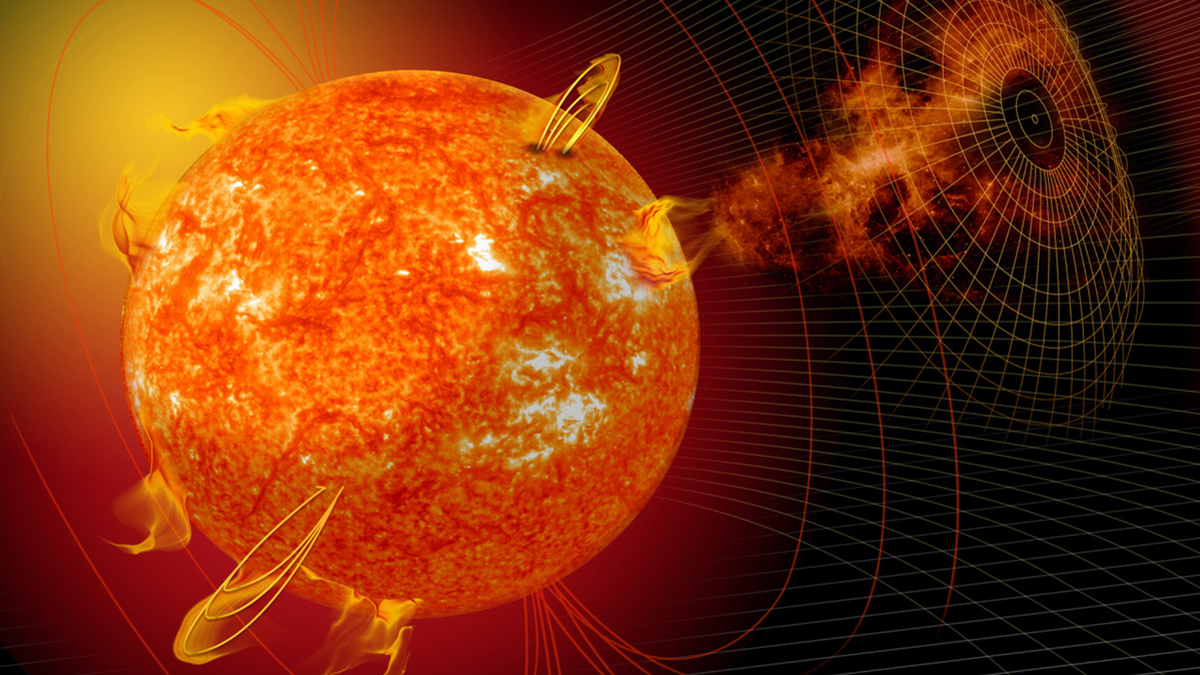
Satellites in low Earth orbit (LEO) can venture hundreds of miles off their expected trajectories when bad space weather hits. The problem affects the International Space Station, China's Tiangong space station and many Earth-observing satellites that need a close view of our planet.
Experts say this positioning uncertainty increases the risk of dangerous orbital collisions, which threaten to worsen the space debris problem and make the space around Earth unsafe.
"At altitudes of 500 kilometers [310 miles], we can determine the position of our satellites with the accuracy of 2 centimeters [0.8 inches]," Alex Saltman, CEO of California-based satellite company GeoOptics, which makes meteorological measurements of Earth's upper atmosphere, told Space.com. "But at lower altitudes, it becomes a big problem."
Related: Space weather: What is it and how is it predicted?
The lower the orbit, the bigger the inaccuracy. That's because space weather affects the density of Earth's upper atmosphere. As atmospheric density naturally decreases with altitude, the variations caused by space weather are bigger closer to Earth. The higher the density, the more drag satellites face, which slows them down and makes them sink toward Earth. At the lowest altitudes, satellites can be hundreds of miles off their predicted paths when too much solar wind blows from the sun, David Vallado, a senior research astrodynamycist at the Commercial Space Operations Center (COMSPOC), told Space.com.
Altitudes of around 250 miles (400 km) and lower are the worst hit. It's exactly in these orbital regions that some of the most valuable spacecraft fly. The International Space Station circles 250 miles above Earth, and Tiangong resides only slightly higher, at 260 miles (425 km). Researchers are increasingly eyeing these very low Earth orbits because they provide a detailed view of Earth, and plans are underway for new missions to operate in this space.
"The lower you get into the atmosphere, the better you can do on certain kinds of measurements," said Saltman. "For example, radar measurements get much, much better the lower you can get."
When satellites run out of the fuel that helps them maintain their altitude, they begin to spiral downward. On their way, they pass through this region of higher uncertainty, posing a threat to operational spacecraft. Trajectories of satellites and pieces of space debris are determined many days in advance, using measurements by ground-based radars and optical sensors. But a strong burst of solar wind from the sun can throw these predictions completely off. This creates challenges for spacecraft operators as they struggle to ascertain how close their spacecraft might get to other objects.
"It's an ultimate thing to answer, because the operator must decide whether they are going to perform a collision avoidance maneuver or not," Dan Oltrogge, chief scientist at COMSPOC told Space.com. "If they decide to maneuver and space weather changes, that changes the drag profiles and where and how close things come together. It may negate the maneuver and actually increase the risk."
Satellite operators plan collision avoidance maneuvers several days and many orbits in advance. But space weather forecasters have a very limited understanding of what the sun will do next. Coronal mass ejections (CME) — massive bursts of superheated plasma from the sun's upper atmosphere — explode from sunspots without warning and take two or three days to arrive at Earth. Moreover, scientists can generally only measure a CME's strength about 30 minutes before it hits the planet, when it passes the Solar and Heliospheric Observatory (SOHO), a spacecraft jointly operated by the European Space Agency and NASA some 900,000 miles (1.5 million kilometers) from Earth.
"If you have a warning that's out an hour in advance, that's probably not sufficient to get the command and control to get the maneuver planned," said Vallado.
Related: Wild solar weather is causing satellites to plummet from orbit. It's only going to get worse.
RELATED STORIES:
And it's not just the sun's day-to-day behavior that is not well understood, Vallado added. The number of sunspots, solar flares and CMEs that arise from the star varies on longer time scales following a roughly 11-year cycle that swings from a minimum through a maximum to the next minimum. The problem is that each solar cycle has a different strength, and therefore spacecraft operators can't plan ahead, as they can't predict how bad space weather will be during their next mission. A more active cycle means spacecraft will face more drag, and as a result run out of fuel faster and deorbit sooner. The differences might be substantial.
"Generally, we plan on a five-year lifetime for the satellites," Saltman said. "But it does vary. It's unlikely to be less than three years, but with the variations [in solar activity] it could be up to 10 or 12 years."
Saltman added that GeoOptics has lost one operational satellite due to space weather. Drag was not the culprit in that case; increased radiation levels caused by the solar wind damaged the satellite's electronics.
"It's hard to know whether the sunspot cycle was responsible, but we've never seen any problems like this before," Saltman said.
Scientists expect that the current solar cycle, the 25th since records began, will reach its maximum at the end of this year. Since the last maximum in 2014, the number of satellites in orbit has increased sevenfold. Space around Earth is now busier than ever, and dozens of new space companies that have joined the fray since the last time space weather was really vicious will have to learn to live with it. Space weather scientists and experts in satellite trajectory predictions are working hard to help them. But things might get a little tricky in the next couple of years.
The Link LonkApril 11, 2024 at 09:00PM
https://news.google.com/rss/articles/CBMiT2h0dHBzOi8vd3d3LnNwYWNlLmNvbS9zcGFjZS13ZWF0aGVyLXVucmVsaWFibGUtc2F0ZWxsaXRlLXRyYWplY3RvcnktcHJlZGljdGlvbnPSAQA?oc=5
Space weather can make it hard to predict satellite trajectories. Here's why that's a problem - Space.com
https://news.google.com/search?q=hard&hl=en-US&gl=US&ceid=US:en
No comments:
Post a Comment